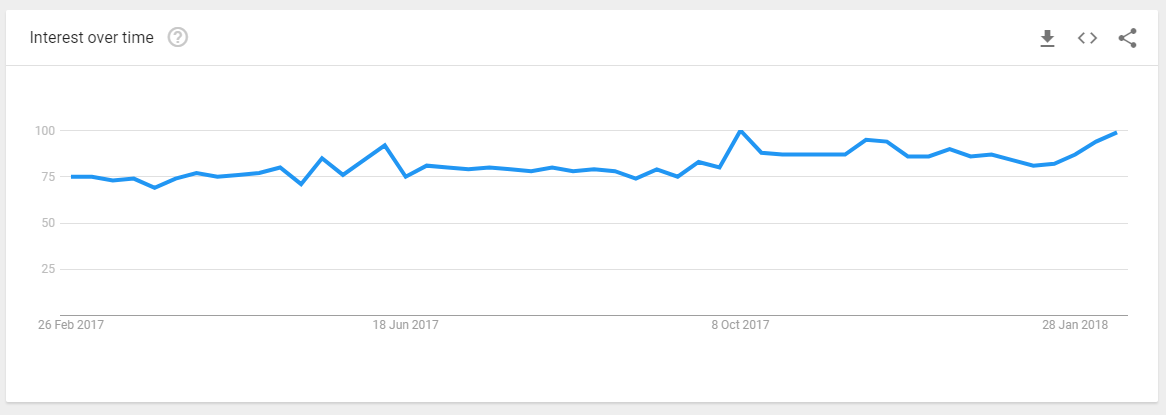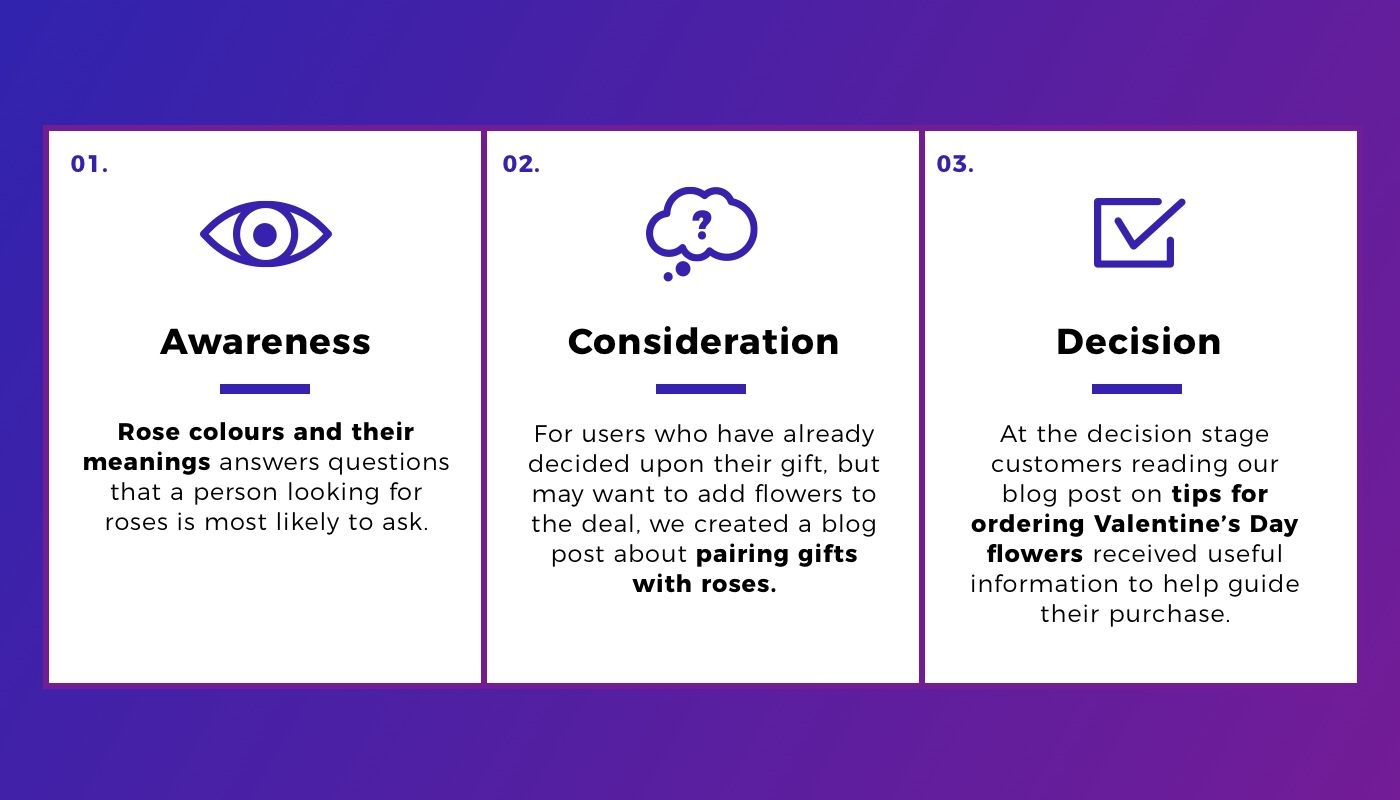The biggest SEO challenge with blogging is not writing itself, but deciding what to write about for maximum impact.
Online marketing is a competitive game and it’s only natural for business owners to want to see a return for the time or money they invest in producing content. So why is it that only 30% of content marketers have a consistent strategy in place to guide how they choose their content topics?
For your blog to really be successful, and provide a maximum ROI, it needs to be driven by purpose and creativity. The best way to inform both of these blogging essentials is data-driven research, guided by a set of content pillars.
We’ve repeatedly found that an integrated blogging strategy, which draws upon multiple content pillars achieves the best results. So we’ve put together a list of the five content pillars we use at Reef to provide our clients with content that has both a creative edge, and direction.
1. Interest Area: What Does Your Audience Care About?
The first tactic you can use is to let your customers – both existing and prospective – take control of what you should blog about. Make it all about their needs, wants, and preferences.
Go where your audience is. Read forum postings on websites like Reddit, and use BuzzSumo to see what relevant topics are being shared on social media. This will tell you what has traction with your target audience, and provide you with ideas that you can transform into content.
For example, one of our not-for-profit (NFP) clients specialises in reducing HIV transmissions by efficient testing and treatment in New South Wales. Their highest performing blog post, which was read by over 1400 people in January, was a guide to spotting the early symptoms of HIV.

As you can see, this is traffic that converted, as 81 users booked HIV tests in January of 2018.
This is why this blog topic resonated with readers: Their audience is the LGBTQ community in Australia, and their largest readership is in New South Wales. By using a blog post to answer a relevant query in a clear and structured manner, the client has successfully attracted high-quality traffic to the site.
2. Search Trends: What Is Currently Driving Online Traffic?
If you’re looking to optimise your blog for search engines, then you need to consider topics that are trending online. This is not to say that you should cherry-pick keywords of vague relevance but with an attractive search volume. Instead strategically capitalise on what is trending within your niche, industry or scope of your audience’s interests.
One of our ecommerce clients, an online florist, recently conducted an online campaign for Valentine’s Day. Naturally throughout January and early February of each year, we see a spike in search volume for particular types and arrangements of flowers. We created a series of blog topics for them that capitalised on this search trend for a rose-based keyword grouping.

*Google Trends Screnshot
Our strategy was to create a nest of trending content that appealed to all stages of the sales funnel:

This approach helped to spearhead the Valentine’s Day campaign, attracting significant organic traffic from Google, and referral traffic from the client’s social channels.
3. Brand: Write About What Makes You, You
Users love a brand that they can relate to, and that’s not afraid to publicise what they stand for. You should dedicate at least 1 post per month to exploring and analysing issues, reviewing events or simply giving an opinion on something that matters to you and your brand. This strategy will put a human touch on your business, and facilitate bonding between your company and users.

Another of our NFP clients is a cancer research foundation, who regularly post updates in their newsroom about the grants and research projects they’re currently sponsoring.
At the core of this content are issues and events that the organisation cares about, but which also put them in a better position to promote their identity and connect with users.
4. Product: Answer Questions, Don’t Sell the Product
Product-specific content is what most clients naturally wish to focus on because they believe it will help drive sales. While promotion is important, a blog entirely full of gift guides, menus or other service/product-based material will have a very limited appeal. Blogs are all about using informative content to lead people down the sales funnel. Direct sales are best left to your product landing pages.
This recent study found that 47% of prospects consume between 3-5 pieces of content before even considering paying for your products or services. This means that if you begin the buyer’s journey by presenting them with your products, you have escorted them out of the funnel rather than down it.
Search for questions your customers are asking using these three SEO tools:
- Search Console: Look at the long-tail keywords you are already ranking for, particularly “why”, “what”and “how” related terms.
- People Also Ask For: When you enter a query into Google, this box will serve you up a list of related questions users are asking.
- Industry Forums: Use forums such as Whirlpool or Quora to find more questions your target audience is asking.
- AnswerThePublic: Enter your ideas into this handy tool to generate a web of question and preposition focused keywords. These are great topics that focus on providing users with utility for maximum engagement.

* AnswerThePublic Screenshot
With a well-researched and timely content calendar which provides useful information, they are now adding value to their users’ experience, and are more likely to be trusted at the decision phase of the sales funnel.
5. Industry: What Are Your Competitors Saying?
Don’t be nervous about drawing inspiration from something your competitors are doing, and then devise a strategy to do it better. Regarding content, you should always be aware of what your key competitors are saying, because they’re trying to reach the same audience as you!
If users aren’t engaged with your blog content or consistently fail to convert, analyse the topics your competitors are writing about by following these easy steps:
- Start with their blog: Take note of what they are saying and the number of shares/likes/retweets that are recorded on the post’s social sharing meters.
- BuzzSumo: If this information can’t be found on the blog itself, feed the posts into this handy tool and it’ll give you much of the data you need.
- Backlinks: Feed your competitor’s URL into a tool such as Ahrefs, SEMRush or Majestic. Look at who is linking back to their blog and in what context. Use these insights to inform what questions you should be answering.

*BuzzSumo screenshot
Once you have your data, apply your findings to your own content strategy.
Get Started with Topics that Your Customers will Thank You For!
Remember that a successful blog is one that is driven by an informed content strategy, regularly drawing upon content pillars for material. Do your homework, listen to what your audience is saying, think about what YOU stand for, and convert this material into quality content that could drive the traffic you’ve been missing out on.
Ensure that you are incorporating all five of these proven blog topic pillars in some capacity, and you’re on your way to a vibrant and thought-leading blog that will earn you an attractive search presence.
